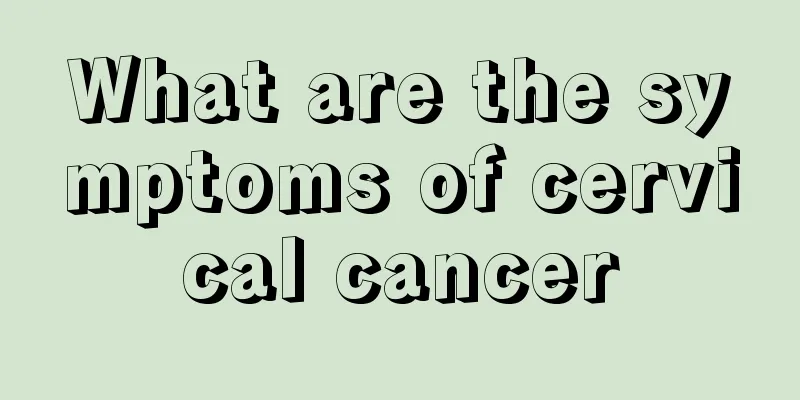What is the detailed process of in vitro fertilization?

|
Due to various reasons, some couples are always unable to conceive successfully. In the past, it was very difficult to solve this problem. However, with the development of technology, we have the well-known in vitro fertilization, which can help couples with functional disorders realize their wish to have a baby. In vitro fertilization is different from normal pregnancy. It requires professional methods to obtain eggs from the female body and sperm from the male body. The sperm and eggs are fertilized in vitro to form a fertilized egg, which is then transplanted into the uterine cavity. This is the general process of in vitro fertilization. In fact, in vitro fertilization is a very complicated process. The following is a detailed introduction to professional knowledge in this area. First, ovulation induction treatment Since not every egg can be fertilized and not every fertilized egg can develop into a viable embryo, multiple eggs must be obtained from the female body to ensure that there are embryos that can be transplanted, which requires ovulation induction treatment for women. There are many types of ovulation induction programs, such as the standard long program, short program, antagonist program, etc. The long protocol refers to the use of GnRH agonists starting in the luteal phase of the previous cycle, the short protocol refers to the use of GnRH agonists starting on the second day of the menstrual cycle, and the antagonist protocol is to first use gonadotropin and then start using GnRH antagonists after the follicles have grown to a certain extent. The purpose of using GnRH agonists or antagonists is to prevent spontaneous oocyte loss before oocyte retrieval. Generally speaking, the long program has the highest success rate, but not all women are suitable for the long program. The ovulation induction plan must be formulated according to the specific circumstances of each person, which is the so-called "individualized" treatment. Before entering the IVF cycle, in most cases women will be asked to take birth control pills in the previous cycle in order to suppress ovulation. This can avoid the effects of GnRH agonists on the fetus (possibly causing miscarriage) in the event of pregnancy during the natural cycle. In addition, for people with irregular menstruation, the use of contraceptives can help determine the time to induce ovulation. In addition, the use of contraceptives can also prevent the formation of physiological ovarian cysts and facilitate ovulation induction treatment. On the second day of the menstrual cycle, or after satisfactory suppression of GnRH agonists (reproductive hormones and uterine and ovarian ultrasound examination results meet the requirements), women begin to use ovulation-inducing drugs. The doctor judges the growth of follicles based on the results of ultrasound monitoring and serum hormone measurements and decides whether the dosage of ovulation-inducing drugs needs to be adjusted. When the follicles are mature, hCG injection is given to promote the final maturation of the egg. Egg retrieval is usually done 36-38 hours after hCG injection. Second, egg retrieval Under the guidance of B-ultrasound, the doctor uses a special egg retrieval needle to puncture the mature follicles through the vagina and suck out the eggs. Egg retrieval is usually performed under intravenous anesthesia, so the woman does not feel any pain from the puncture. 3. In vitro fertilization Sperm retrieval: While the female retrieves the eggs, the male retrieves the sperm. After the semen has gone through a special washing process, the sperm and egg are placed in a special culture medium in the hope of natural combination. This is called conventional fertilization. 4. Embryo transfer A few days after fertilization, a very thin embryo transfer tube is used to transfer the best embryo into the mother's uterus through the cervix. The number of embryos to be transferred is determined based on age, embryo quality and previous IVF outcomes. Usually 2-3 embryos are transferred. In recent years, in order to reduce the multiple pregnancy rate, some centers have chosen to transfer a single embryo, or a maximum of 2 embryos. Because the embryo transfer tube is very thin and the doctor's movements are gentle, the patient usually does not feel any pain. Fifth, luteal support Due to the use of GnRH agonists/antagonists and ovulation-inducing drugs, as well as the loss of granulosa cells caused by oocyte retrieval, women usually have luteal insufficiency during the oocyte retrieval cycle and need to use progesterone and/or chorionic gonadotropin for luteal supplementation/support. If pregnancy is not present, stop taking progesterone and wait for menstruation to occur. If pregnancy occurs, progesterone should be continued, usually until 3 weeks after the fetal heartbeat is seen on ultrasound. 6. Confirmation of pregnancy Serum HCG is measured 14 days after embryo transfer to determine whether pregnancy is present. Serum HCG is measured again 21 days after embryo transfer to understand the development of the embryo. A transvaginal ultrasound examination is performed 30 days after embryo transfer to confirm whether there is intrauterine pregnancy and the presence of fetal heartbeat. |
<<: What is the instruction manual for ibuprofen extended-release capsules?
>>: Is melasma easy to treat? Beware of misunderstandings in treating melasma!
Recommend
Can you eat wolfberries after soaking them in water?
Many middle-aged men like to drink wolfberry tea,...
How to deal with a sudden nosebleed in one nostril
When it is a slow change of seasons, or due to so...
What are the traditional Chinese medicine methods for treating lung cancer? Six traditional Chinese medicine methods are effective for treating lung cancer
The number of lung cancer patients is increasing ...
What should I do if the hair on the top of my head becomes thinner and thinner
Sometimes when we wake up in the morning, we find...
Who is at high risk of ovarian cancer
Women with one or more of the following character...
Things to know about health preservation in the beginning of autumn
After the beginning of autumn, the weather will g...
What should I do if I have acute diarrhea?
The impact of acute diarrhea is relatively large....
Clinical classification of prostate cancer
Prostate cancer is a malignant tumor that origina...
I feel hot and sweaty at night and can't sleep
When people are under a lot of mental stress, the...
Types of Aloe Vera
Aloe vera is a plant. Aloe vera has many uses, es...
Are lung cancer and brain cancer contagious?
Cancer is not contagious. Unless the patient also...
How long can one live with neurofibromatosis? I have already exhausted my family's wealth.
Although neurofibromatosis is a hereditary diseas...
What are the shapes of double eyelids
Double eyelids are a form of eyelids. The benefit...
How to remove acne marks faster
Many teenagers who are in puberty will develop ac...
Why do I always feel sleepy in the morning?
It is normal to feel sleepy after lunch, but if y...









